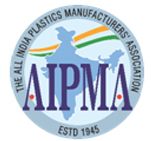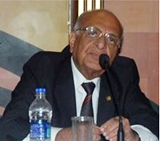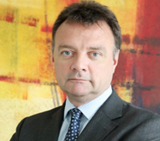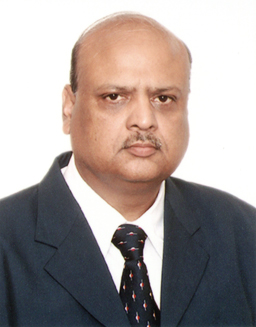Quality upgradation and skill development crucial for plastics growth – An interview with AIPMA President Rituraj Gupta
|
AIPMA represents various segments of the Indian plastics industry such as processers, machinery manufacturers, additives manufacturers, moulds and dies makers, traders, consultants and exporters. AIPMA organizes Plastivision India, a mega plastics exhibition, every three years in India and international exhibitions Plastivision Arabia and Kenyaplast. AIPMA is also one of the founder members of Plastindia Foundation, the organizer of Plastindia Trade show, which is among the world's top plastics trade shows.
In an exclusive interview with POLYMERUPDATE, Mr. Gupta speaks on AIPMA's new initiatives and their integration with the Prime Minister's "Make in India" campaign, discusses previous and upcoming AIPMA events and opines on several other current topics.
Interview of Mr. Rituraj Gupta (RG) with Lekhraj Ghai (LG):
LG: Which of the projects that were initiated by the past AIPMA President will be carried forward under your leadership?
RG: Every project that AIPMA has initiated during the tenure of Mr. Anand Oza will be pursued with utmost dedication. For instance, the re-development of the AIPMA House will be continued and the AIPMA House will soon be equipped with a Skill Development Centre, a Knowledge Centre and a Design Centre. All necessary approvals related to the re-development will be obtained and within two years, this project should be complete.
LG: Could you enlist some of the new initiatives that will be taken by AIPMA during your term as President?
RG: My goal as the President of AIPMA is to enhance the connectivity among our members. This can be achieved through disseminating knowledge on various issues that are encountered by the plastics industry, such as quality-control, cost-control, making existing plastics products better and improving the design of upcoming products. During my tenure as President, AIPMA aims to involve a number of knowledgeable speakers and conduct at least 5–6 seminars on various subjects. Every city that houses an AIPMA zonal office—Kolkata, Delhi and Chennai—will host at least one seminar, while we intend to organize 2–3 seminars in Mumbai.
LG: How does AIPMA intend to contribute to the "Make in India" campaign initiated by Prime Minister Narendra Modi?
RG: Through quality upgradation and skill development. The success of "Make in India" depends on the zero-defect policy often talked about by Prime Minister Narendra Modi. Our products can be free from defects only when the machinery used to manufacture them are of good-quality, reliable and efficient. Although the machines procured from China are cheaper, they are not reliable and consume more power than the ones made in Europe, which also ensure high-quality output. Also, we have already requested the government to extend the Technology Upgradation Fund Scheme (TUFS), which presently exists in the textile industry, to the plastics industry. If the TUFS is extended to the plastics sector, it will not only contribute towards "Make in India" but also to the products with zero defect policy of the Prime Minister. Furthermore, TUFS in the plastic sector could greatly increase the demand for machinery manufacturers in India and abroad.
Skilled labour is also highly essential for the success of the "Make in India" campaign. As I said earlier, AIPMA is already developing as Skill Development Centre at the AIPMA House. In the meantime, we have arranged for a five-day visit of hand-picked individuals from two of our member companies to Italy. These representatives from Kanchan Plastics and Shree Group will visit manufacturers in Italy and gain first-hand knowledge, particularly on film extrusion, thermoforming and rubber technologies. This knowledge will then be implemented in India by the companies and then the knowledge will be passed on to other member companies.
LG: How has AIPMA's experience been in working with the new government?
RG: Extremely smooth. We have already had a number of meetings with Shri Ananth Kumar, Honorable Minister of Chemicals and Fertilizers, and the results of the meetings have been extremely positive. For instance, one of the issues that was discussed with Shri Ananth Kumar was the import of jute into the country, which was affecting tape manufacturers for woven sacks. On understanding the effects of the import of jute on the tape manufacturers and also on the jute industry in the country, Shri Ananth Kumar promptly instructed the Commerce Ministry to put a ban in place on the import of jute in India.
LG: How will "Make in India" impact the already established petrochemical and plastics companies in India who have for long enjoyed limited domestic competition?
RG: "Make in India" is for those products that are consumed in India but are procured from outside India. For example, a number of automobile manufacturers make their vehicles in India but import various components such as radiator parts and motor parts. There is huge number of such plastic components that can be easily made in India. Besides, even with the upcoming capacities, I believe there is still ample room for putting up new capacities in India and hence there is no question of competition at present and in the foreseeable future.
LG: How much business was generated during Plastivision Arabia 2014? What was the total number of exhibitors and the total number of visitors?
RG: Plastivision Arabia 2014 that was held at the Expo Centre in Sharjah, UAE, attracted around 8,000 international visitors. There were 250+ exhibitors in the concurrent exhibitions Plastivision Arabia, Arabiamold and Print Pack Arabia. The event was a resounding success and many of the exhibitors have even paid in advance for the next Plastivision Arabia. Several of the participants have even requested to continue their deposits for Plastivision Arabia 2016.
LG: How will the next edition of Plastivision India be different from the previous exhibitions?
RG: The tenth edition of Plastivision India in 2017 will see an increased number of international visitors and international exhibitors. One of the benefits of Plastivision is that it provides a platform for international manufacturers to come to India and exhibit their machinery, which makes it easier for the small and medium enterprises of India to source their machinery. One striking difference in the upcoming exhibition is that in Plastivision 2013, exhibitors from China had occupied 1,600 square metres of floor space, while for Plastivision 2017, we already have confirmed the sale of 3,000 square metres. Likewise, a large number of companies from Europe have also expressed interest in participating in Plastivision 2017. This time, we will be targeting 150,000 visitors and 1200–1300 exhibitors.
LG: Considering the new capacity additions in PE and PP in India this year, is the government likely to revise the import duties?
RG: In addition to hampering exports, increased import duties mean that local producers would have the leverage to increase their prices. As plastics processors, this would be bad for our businesses. The current import duties are ensuring that the local producers are selling material at reasonable rates. Moreover, considering the influx of capacity additions in the country through OPaL, IOCL, GAIL and RIL, there is no need for the increasing the import duties.
LG: What is the current strength of plastics processors in the country? How many are small, medium and large-scale? How does AIPMA intend to contribute to the growth of the country's plastics industry?
RG: There are about 50,000 small and medium-scale enterprises, out of which 2,500 are direct AIPMA members. In addition, there are about 22,000 indirect members through AIPMA's regional associations.
The per capita consumption of plastics in India is 10 kg at present, and AIPMA aims to increase this to 20 kg by 2020. This can be achieved by observing the innovations in developed countries and replicating their models in India. As I mentioned earlier, AIPMA is sending representatives to Italy, who will be studying the machinery, equipment and practices in use over there, and this knowledge will then be implemented in our industry.
LG: What are your thoughts on the prohibition of the use of PET bottles for pharmaceutical products proposed by the Central Government?
RG: The government had invited objections to the ban on the use of PET bottles for packaging medicines/drugs. Following an all-associations meeting, AIPMA has sent across its objections based on appropriate scientific facts and logic. Likewise, other associations like CPMA have also opposed the move and sent their objections to the Ministry of Health & Family Welfare. The Government of India is yet to decide on the ban and we are confident that such a ban will not be implemented.
LG: What are benefits of PET and other plastics as packaging material as opposed to the claims of longer shelf-life and 100% recyclability of glass?
RG: All plastics are recyclable and PET is 100% recyclable. About the shelf-life, it can be safely said that the shelf-life of a PET bottle exceeds by far the shelf-life of the medicine or drug it contains.
LG: What is your take on the change in the venue of the Plastindia Exhibition from New Delhi to Gandhinagar?
RG: As the Founder Members of Plastindia Foundation, we sincerely hope that Plastindia 2015 is a resounding success and I do not think that the change in venue is going to affect the success of the event. The venue is bigger and better than the Pragati Maidan Fairgrounds in New Delhi.
END
For further information, commentary and interviews, please contact us on +(91-22) 61772000 and info@polymerupdate.com
ABOUT AIPMA
|
ABOUT POLYMERUPDATE

POLYMERUPDATE is an online destination for the plastics and petrochemical industry, which specializes in providing market- moving information and pricing data on petrochemical products and industrial polymers. Global players seeking polymer market
intelligence rely on the real-time news and price alerts provided on POLYMERUPDATE for making informed business-critical decisions. POLYMERUPDATE covers a whole spectrum of products such as Crude oil, Naphtha, Aromatics, Olefins, Polyolefins and Petrochemical Intermediates. With almost two decades of extensive experience in garnering and providing business-critical content, POLYMERUPDATE has expanded its readership to more than 60 countries in the world and its pricing methodology is considered as a benchmark across South Asia. POLYMERUPDATE interviews and articles are a rich source of information on the latest trends in the chemical and petrochemical industry.
Visit POLYMERUPDATE on the internet at www.polymerupdate.com
Sign up for our newsletters
More like this

Apex plastics body AIPMA urges government to reconsider PET ban – A POLYMERUPDATE special report Read More

PlastIndia move official, Counsil explains bold decisions - An interview with NEC Chairman J.R. Shah Read More

SABIC in India - A new era of strategic partnership Read More

Commodities Exchange: A new beginning – Q&A with Ian Wright of DGCX on plastics futures trading Read More

A Pre-Budget Overview of the Indian Economy – Special Feature Read More





